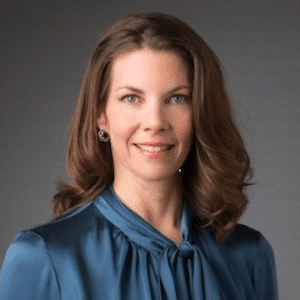Mapping a More Diverse and Inclusive Future
 Submitted by Alison D. Frey, Member, Dickinson Wright PLLC
Submitted by Alison D. Frey, Member, Dickinson Wright PLLC
Like most major law firms, Dickinson Wright is committed to diversity. Beyond the moral imperative for it, there is a business case for it. Studies show that organizations with high levels of diversity perform better financially and make better decisions.
Still, high levels of diversity have remained elusive in the legal industry. Dickinson Wright has been no exception to this trend.
That is, until last spring, when the firm decided to take a new approach in order to make substantial progress in its diversity efforts.
Getting a “MAP”
Enter the University of Michigan Ross School of Business. For 24 years, students have been teaming up with companies throughout the world to solve their most pressing business problems through “Multidisciplinary Action Projects (MAP).” The competition among companies seeking to participate in the MAP program is stiff and the application process is consuming. After passing a faculty review process, a proposal must also attract the interest of students willing to devote their time and energy to it.
Dickinson Wright believed the investment of time and resources to apply was worthwhile. We, at the firm, wanted fresh thinking and believed that business students, employing a data-centric approach, could produce objective insights and actionable steps to improve our diversity and inclusion efforts.
Last year Dickinson Wright made a bit of history by being the first law firm ever chosen for a MAP.
A Candid Assessment
We had two primary goals for the project: 1) identify factors related to the retention of female and minority attorneys and 2) develop recommendations to help us fulfill our diversity mission statement.
We placed virtually no restrictions on the four Michigan students, who worked full-time under the supervision of a faculty adviser. Over 10 weeks, they interviewed 46 attorneys, visited three offices and compiled data on our attorney demographics, retention, compensation and work allocation. The group also studied best practices in the industry, researched the policies of our peers, spoke with subject-matter experts and reviewed academic journals and industry publications.
In May, the students delivered a 100-plus-page report, a data-rich assessment of how our diversity efforts stack up against our peers and the legal industry. There were many bright spots, including the conclusion that neither gender nor ethnicity are significant factors in attorney compensation. But there were also plenty of areas highlighted for improvement. As Katheryne Zelenock, a member at Dickinson Wright in charge of the project, says, “a lot of firms wouldn’t have opened themselves up to such a thorough review.”
Moving Forward
The report had eight recommendations, and we’ve already begun implementing many of them, such as capturing more data to aid us in decision-making, developing training on how to engage in inclusive business development practices and requiring annual unconscious bias and harassment training.
In addition to the recommendations, what we learned from the MAP experience is of great value. Three lessons that stand out:
1. We have a great culture. Surveyed attorneys were asked to name their favorite thing about Dickinson Wright. An impressive 91 percent of respondents said their colleagues. Those results solidified our belief that we have the foundation needed to make the required changes.
2. Data is critical. Without it, you don’t know what needs to be fixed. As just one example, we now have data on the usage of minority attorneys by our top billing partners. We were pleased to discover that many of our top billing partners distribute work to minority attorneys in a representative fashion. The data also showed areas where we can improve, but the bottom line is that we have the data.
3. There is no such thing as too much communication in this area. As just one example, many of our attorneys viewed our part-time policy as vague, and there was confusion about the implications of taking advantage of it. The reality is that the policy offers an enormous amount of flexibility. It’s on us to make sure we make our benefits clear.
As a result of the MAP process, we now have an objective assessment of our diversity and inclusiveness efforts. “We had the courage to test ourselves and identify things we need to work on,” Zelenock says, “and MAP helped us validate that there are a few things we’re doing really well on.” What’s more, we now have a map pointing us to where we want to go.
Sponsored by